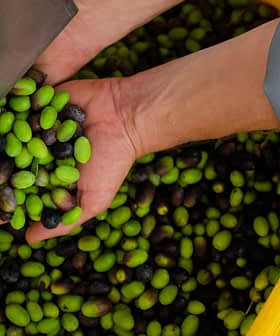Olive oil imports in the world’s eight largest markets fell by nearly 21 percent in the first four months of the 2021/22 crop year, compared to the same period in the previous one. Overall, imports reached 180,146 tons.
Table olive imports also dropped 14 percent in the five largest markets, reaching 137,403 tons.
According to the latest figures released by the International Olive Council (IOC), the United States, the largest olive oil importer, reported a 14.5 percent drop in the first months of the 2021/22 crop year, which begins in September.
See Also:Trade NewsHowever, the most significant drops in olive oils imports were reported in Canada (-40 percent), Brazil (-27 percent) and Russia (-23 percent). Despite record-setting consumption last year, Australian imports also fell by 8.5 percent.
On the other side of the spectrum, China experienced a nearly eight percent increase in its olive oil imports, while Japan experienced much slower growth of just 0.6 percent.
Imports to the European Union originating outside the 27 member bloc also fell 45 percent.
Away from the current crop year, global olive oil imports in the first months of the season have substantially grown compared with previous years.
Looking at the historical trend in the major import markets, the United States imported 67,952 tons in 2015/16, far below the current 80,061 tons of imports.
In the same period, Brazilian olive oil imports rose from 12,772 tons to 24,443 tons, and Japan’s imports increased from 10,878 tons to 15,297 tons. China’s imports grew from 10,523 tons to 15,681 tons.
However, the IOC data also reveals the challenges olive oil exporters face in many international markets.
Imports volumes from the non‑E.U. countries have been following a downward trend, from the 27,166 tons reported in the first months of the 2015/16 crop year to the current 19,254 tons.
Most of the imports in the first four months of the current season come from Spain, the only major exporter that has seen its volumes grow compared to the same period of the previous year.
Spanish olive oil exports grew 5.2 percent, from 64,764 tons in 2020/21 to 68,108 tons in the current crop year. As a result, Spain remains the leading exporter with a global market share of 38 percent.
Due to the challenging season for the Tunisian olive sector, North Africa’s largest producer has seen its exports drop 52 percent compared with the same period of the previous year.
Portugal and Italy have also experienced relevant decreases of 34 percent and 17 percent, respectively.
IOC figures also show that 72 percent of all olive oil imports were related to the virgin olive oil category, which includes both extra virgin olive oils and virgin olive oils.
Meanwhile, non-virgin olive oils made up 21 percent of imports and olive pomace oil made up 6.6 percent.
In this first months of the 2021/22 crop year, the most relevant markets for olive oils imports remain the United States, which account for 35 percent of the global figures, followed by the European Union with 17 percent, Brazil (eight percent), Japan (six percent), Canada (five percent), China (four percent) and Australia (three percent).
Regarding table olive imports, the IOC reported that five markets represent 67 percent of all imports, with the United States being the most relevant importer with a 24 percent share.
Brazil follows with 18 percent and the European Union with 17 percent. The U.S. has been the only importer which has seen the total figure grow, from 45,309 tons in the first four months of the 2020/21 crop year to the current 46,941 tons.
Among the leading table olive exporters, Morocco is the only one that has seen volumes growing from last season 17,221 tons to the current 19,756 tons. On the contrary, the most significant decrease in exports has been reported in Egypt (-60 percent) and Peru (-33 percent).








